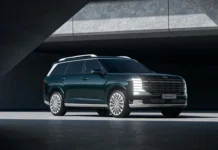
The party is most definitely over for Ford’s long-lived supermini.
While folks here in North America only had a brief stint with the tiny Ford Fiesta, it’s officially the end of an era as the Blue Oval wraps up global production Friday. The automaker announced it would kill off its small hatchback last year, but it’s still a sad moment as nearly a half-century of iconic cars (especially in British culture) comes to an inevitable end.
So, why is the Fiesta going away? A Ford of Europe spokesperson squarely placed the Fiesta’s demise on the company’s shift to electric vehicles. “As part of this transition,” they said, “production of the Fiesta in Cologne, Germany will be discontinued on July 7, 2023, and a new era at the Cologne Electric Vehicle Center will begin.”

Since 1976, Ford sold more than 22 million Fiestas in more than 50 countries.
As for us, the Blue Oval invited American buyers to the party between the 2011 and 2019 model years, during the car’s sixth generation. We even saw an ST hot hatch to complement its bigger Focus sibling. Nothing good lasts forever though, and Ford decided to ax both the Focus and the Fiesta in our market as it moved toward a bigger (and more profitable) SUV portfolio.
Now, though European buyers did see a seventh-generation model and a revival of the Fiesta-based Puma (this time as a crossover), tightening emissions regulations in the UK and EU markets are more or less consigning all new internal combustion models to the history books in the coming years. Ford, for its part, previously said its entire European model range “will be zero-emissions capable” (read: will at least have one plug-in option) by 2026. From there, the automaker aims to go fully electric by 2030.
Despite the legislation, though, the Romanian-built Puma crossover will remain in production in its ICE form, at least for now. Like in North America, buyers in Europe are moving toward compact SUVs, while automakers earn higher margins on those cars than they so on tiny “superminis”, where profits are razor thin. To that end, Ford also announced last year that the Focus will go away in 2025, as we currently know it.
Will we see the Fiesta or Focus return in electric form? That’s tough to say, as automakers again move toward selling more and more crossovers. The Puma, for example, will get an electric version for 2024.























